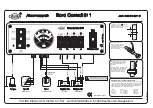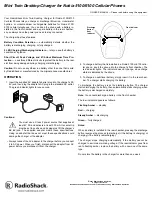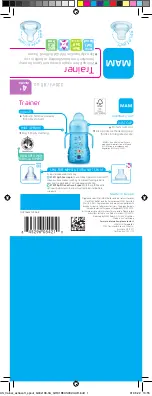
55
55
Owner’s Manual
Ov
er
vie
w
Ho
oku
p
Co
nn
ec
tin
g
to
a
Co
m
pu
te
r
Tu
to
ria
ls
Te
ch
ni
ca
l
Inf
orma
tion
Tro
ub
le
sh
oo
tin
g
and
W
arr
an
ty
So
ftw
ar
e:
Vi
rtu
al
St
ud
io
Liv
e
SL
R
em
ot
e,
and S
tudio O
ne A
rtist
Tutorials
5
Tu
to
ria
lsl
Equalizers 5.3
5.3
Equalizers
The Fat Channels in VSL are equipped with a 3-band semi-parametric
equalizer for every analog input and playback stream. Here’s a brief
explanation of how an EQ functions, as well as some charts to help you
navigate the frequency ranges of various instruments so you can quickly
choose the best EQ settings for your recordings and live mixes.
5.3.1
What is an EQ?
An equalizer is a filter that allows you to adjust the level of a frequency,
or range of frequencies, of an audio signal. In its simplest form, an EQ will
let you turn the treble and bass up or down, allowing you to adjust the
coloration of, let’s say, your car stereo or iPod. In recording, equalization
is a sophisticated art. Good equalization is critical to a good mix.
When used correctly, an equalizer can provide the impression of nearness
or distance, “fatten” or “thin” a sound, and help blend or provide separation
between similar sounds in a mix allowing them to both shine through the mix.
Parametric EQ
The parametric EQ and semi-parametric EQ are the most common equalizers
found in recording and live situations because they offer continuous control over
all parameters. A parametric EQ offers continuous control over the audio signal’s
frequency content, which is divided into several bands of frequencies (most
commonly three to seven bands). A fully parametric EQ like those in the StudioLive
24.4.2 offers control over the bandwidth (basically, the range of frequencies affected),
the center frequency of the band, and the level (boost/cut) of the designated
frequency band. It also offers separate control over the Q, which is the ratio of the
center frequency to the bandwidth. A semi-parametric EQ provides control over
most of these parameters but the Q is fixed. Some devices, such as the StudioLive
16.4.2 and 16.0.2 and the AudioBox 22/44VSL, have quasi-parametric EQ, which is
semi-parametric EQ with a simple, switchable Q setting (typically, High and Low Q).
Q
Q is the ratio of center frequency to bandwidth, and if the center frequency
is fixed, then bandwidth is inversely proportional to Q—meaning that as
you raise the Q, you narrow the bandwidth. In fully parametric EQs, you have
continuous bandwidth control and/or continuous Q control, which allows
you to attenuate or boost a very narrow or wide range of frequencies.
A narrow bandwidth (higher Q) has obvious benefits for removing unpleasant
tones. Let’s say the snare drum in your mix has an annoying ring to it. With a
very narrow bandwidth, you can isolate this one frequency (usually around
1 kHz) and remove, or reject, it. This type of narrow band-reject filter is also
known as a
notch filter
. By notching out the offending frequency, you can
remove the problem without removing the instrument from the mix. A narrow
bandwidth is also useful in boosting pleasant tones of an instrument such as
the attack. Take for instance, a kick drum. A kick drum resonates somewhere
Содержание AudioBox 22VSL
Страница 78: ...74 74...
















































